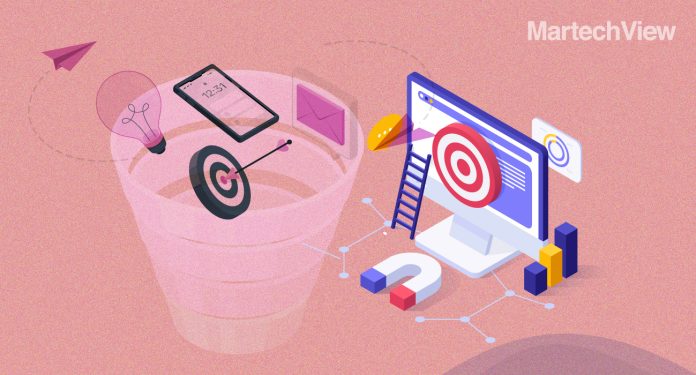Unlock digital marketing success by aligning sales and marketing teams. Explore digital funnel stages and the power of collaboration to boost results.
The concept of a sales or marketing funnel has been around for a long time. It’s the go-to framework for understanding how customers move from first hearing about a brand to purchasing.
But there’s a trick to getting it right—sales and marketing must be in sync to maximize this funnel. When the two teams align, they can better capture and convert leads. This blend is key for those looking to grow their digital marketing game.
Understanding the Digital Marketing Funnel
The shift from the traditional marketing funnel to the digital funnel reflects how the buying process has morphed as digital buying behaviors change. The digital funnel is a bit more detailed than the old-school one and gives you a clearer picture of what your customers think and do.
The digital marketing funnel generally consists of five key stages:
- Awareness: Here, potential customers first become aware of your brand. This stage is about making a strong first impression.
- Interest: This is where customers show interest in your products or services. They’re looking for information and starting to engage with your content.
- Consideration: Customers are actively considering your offerings and comparing them with others. This is where detailed information and persuasive content play a crucial role.
- Conversion: This is the point of decision-making. Customers make a purchase or take a desired action.
- Loyalty: After the purchase, the focus is on building a lasting relationship, encouraging repeat business, and earning referrals.
Remember, synchronizing sales and marketing through these stages is critical to ensuring your customer has a smooth and cohesive experience.
Also Read: Master Email Deliverability: A Comprehensive Guide
Why Sales and Marketing Alignment is Critical
Simply put, Sales and marketing alignment ensures that marketing efforts are informed by sales insights, leading to more targeted and relevant campaigns.
Then why isn’t every brand already doing this? Differences in goals, metrics, tools, and communication styles between sales and marketing departments can create silos. Overcoming these requires a clear communication strategy, shared goals, and integrated data systems.
Opportunities lie in leveraging each function’s insights to refine the marketing funnel stages, ensuring a seamless transition from marketing-led nurturing to sales-led conversion. This alignment leads to a more personalized customer experience, inspiring loyalty.
Sales and Marketing Roles Within the Digital Funnel
Awareness stage
At this point, sales and marketing roles are distinct but equally important. This stage sets the stage for everything that follows.
Marketing: As a marketer, you focus on getting the word out. You’re the storyteller, using advertising, content marketing, and social media to craft a narrative that resonates with your audience. Your job is to capture their attention and spark interest in what your brand offers.
Sales: On the sales side, you’re gathering crucial insights on market trends and customer behaviors. This information is gold for your marketing team, helping them tailor their strategies to hit the right notes. Your finger is on the market’s pulse, which will inform and shape the marketing team’s approach.
Collaboration is key in this stage. When sales feed valuable market insights to marketing and marketing uses these insights to create compelling, targeted campaigns, it sets the foundation for a strong and effective funnel.
Also Read: Why Your Data Strategy Matters Now More Than Ever
Interest stage
In the interest stage, your approach in sales and marketing starts to diverge, yet remains interconnected.
Marketing: On the marketing front, you’re now engaging those who’ve noticed you. Your content needs to be informative but also relevant and engaging. This is the time for blog posts that answer burning questions, infographics that simplify complex topics, or videos that showcase your products in a relatable way. You’re nurturing this new interest, helping potential customers understand why your offering matters to them.
Sales: Meanwhile, this is where sales start to zero in. You’re identifying potential leads from the pool of interested folks. You’re moving beyond names and numbers and gathering specific data about their preferences and behaviors. This information is crucial, as it will guide your approach in the remaining stages of the funnel.
Both teams are working towards a common goal but through different means—marketing is nurturing interest through content, while sales are starting to build the foundation for direct relationships.
Consideration Stage
When you reach the consideration stage, things get more tactical in both sales and marketing.
Marketing: Marketing is all about providing meatier content. Detailed product information, sincere testimonials, and insightful case studies become your main tools. You’re showing potential customers the real-world value of your products or services.
Sales: This is when sales step into the spotlight with direct communication. You’re reaching out to potential leads, answering their specific questions, and presenting solutions tailored to their unique needs and challenges. This is where your earlier research pays off, as personalized interactions can make all the difference in swaying their decision.
In this stage, your roles are complementary: marketing builds the case, and sales brings it home.
Also Read: B2B Influencer Marketing: A Growing Trend
Conversion Stage
In the conversion Stage, marketing and sales are laser-focused on one goal: turning interest into action.
Marketing: Your content is now heavily targeted, featuring strong calls to action that prompt decisive steps from potential customers. Whether they’re signing up for a trial, requesting a demo, or making a purchase, your messaging is crafted to encourage that leap.
Sales: You’re the closer. You take the leads nurtured by marketing and bring them across the finish line. Using the collateral provided by marketing – be it brochures, presentations or case studies – you can address any remaining concerns or objections. Your conversations are personalized, reassuring, and aimed at sealing the deal.
The smooth handoff and alignment between marketing and sales are crucial at this stage. Marketing sets the stage, and sales delivers the final act.
Loyalty Stage
In the loyalty stage, the focus shifts to keeping that hard-won customer engaged and satisfied. This stage emphasizes showing value over time and turning engaged customers into brand ambassadors.
Marketing: You play an instrumental role in nurturing a long-term relationship. You’re using email marketing to keep in touch, loyalty programs to reward continued patronage, and customer feedback initiatives to show that you’re listening and willing to evolve. Your goal is to keep your brand relevant and top-of-mind.
Sales: Your job is to maintain and deepen the relationship. This involves regular check-ins and identifying opportunities for upselling or cross-selling.
Also Read: Out-of-Stock: Retail’s $1 Trillion Inventory Challenge
The digital funnel ensures that sales and marketing teams contribute effectively at each stage, facilitating a smoother customer journey.










